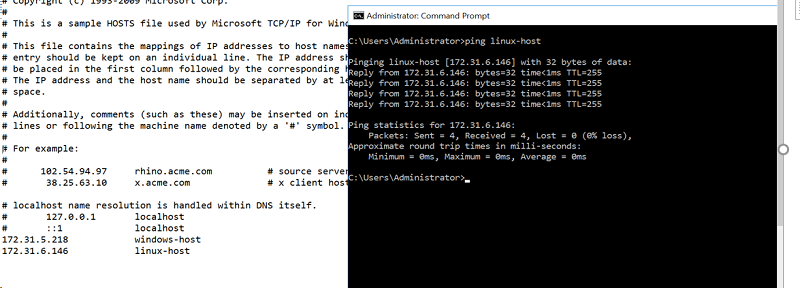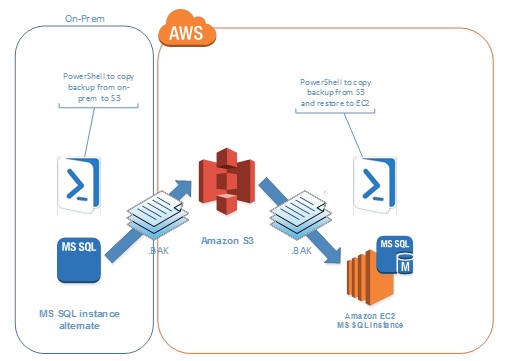AWS Database Blog
Category: Amazon EC2
Multi-region SQL Server deployment using distributed availability groups
A multi-region architecture for SQL Server is often a topic of interest that comes up when working with our customers. The fundamental reasons why customers adopt a multi-region architecture approach for SQL Server deployments is: Business continuity and disaster recovery Geographically distributed customer base and improving latency for end-users This post explains the architecture patterns […]
Migrating your on-premises SQL Server Windows workloads to Amazon EC2 Linux
For decades, IT administrators could only run their SQL Server workloads on Windows. However, as of SQL Server 2017, SQL Server is now available to run in the Linux operating system. For IT administrators, this represents an opportunity to run SQL Server workloads on their preferred operating system, save on Windows Server licensing costs, and […]
Deploying Always On availability groups between Amazon EC2 Windows and Amazon Linux 2 instances
Microsoft SQL Server 2017 supports Always On availability groups between Windows and Linux to create read-scale workloads without high availability (HA). Unfortunately, you cannot achieve HA between Windows and Linux because there is no clustered solution that can manage that cross-platform configuration. To use HA with Always On availability groups, consider using a Windows Server […]
Best storage practices for running production workloads on hosted databases with Amazon RDS or Amazon EC2
October 2023: This post was reviewed and updated for accuracy. AWS offers multiple options to host your databases serving OLTP workloads – host your own managed database on Amazon EC2 instances or use Amazon RDS managed by AWS. RDS manages high availability, automated backups, database upgrades, OS patches, security, and read replica. RDS also offers […]
How to configure SQL Server 2017 on Amazon Linux 2 and Ubuntu AMIs
When you deploy Microsoft SQL Server on AWS, you have many choices for how to optimize the performance, availability, reliability, and costs of your applications. Amazon offers multiple SQL Server versions, broad compute options, and numerous licensing options to optimize usage and reduce costs. You can choose the pay-as-you-go model and use the AWS license-included […]
How to architect a hybrid Microsoft SQL Server solution using distributed availability groups
Migrating monolithic mission-critical Microsoft SQL Server databases from on-premises to AWS (that is, to SQL Server based on Amazon EC2) is often a challenging task. The challenge comes mostly from the following: A prolonged downtime window during cutovers that can have an adverse impact on the business Challenges involved in keeping the databases (both on-premises […]
Bootstrapping Your Large Production On-Premises SQL Server Databases to Amazon EC2
This blog post explains how to use PowerShell and native Microsoft SQL Server backups to migrate an on-premises SQL Server database to an Amazon EC2 instance. In general, we recommend that where possible you should make every attempt to migrate your on-premises SQL Server databases to Amazon RDS. You can find more details on how […]
New, Memory-Optimized Amazon EC2 Instance Types Drive Database Workloads
Perfectly sized instances for maximizing Microsoft SQL Server Standard In September, Amazon Web Services announced availability of the new Amazon EC2 x1e.32xlarge instance type with 128 vCPU and 3,904 GiB of memory. Since that announcement, we have heard from customers that they want more instance configuration choices with fewer vCPUs, while maintaining a high ratio […]
Reading Amazon S3 Data from Oracle on Amazon EC2
When you’re working with AWS services, Amazon S3 is the first choice to store text data files. In the past, to access S3 data, first you’d download the files and then perform extract, transform, and load (ETL) to load the data into Oracle. This approach has two drawbacks. It takes time to download and perform […]
Implement Linked Servers with Amazon RDS for Microsoft SQL Server
December 2023: This post was reviewed and updated for accuracy. Linked servers allow Microsoft SQL Server to run SQL Server statements on other instances of database servers. In this post, we focus on connectivity to other instances of SQL Server in Amazon Relational Database Service (Amazon RDS), hosted in Amazon Elastic Compute Cloud (Amazon EC2), […]









